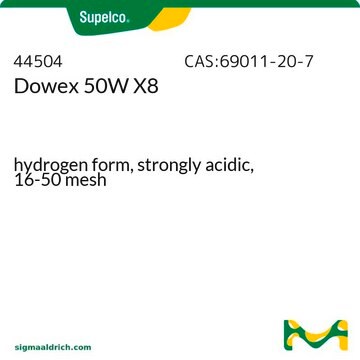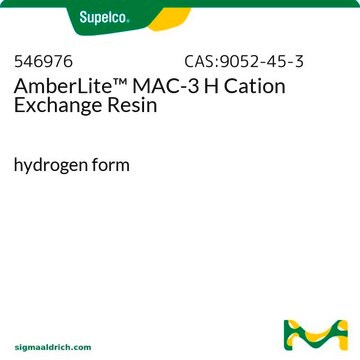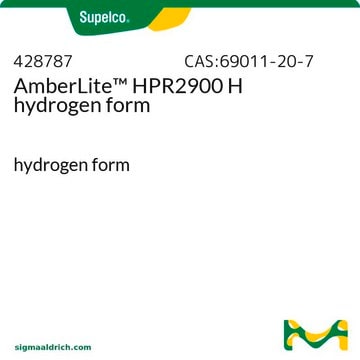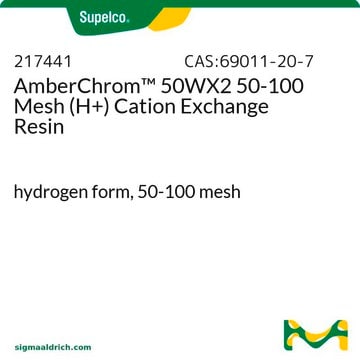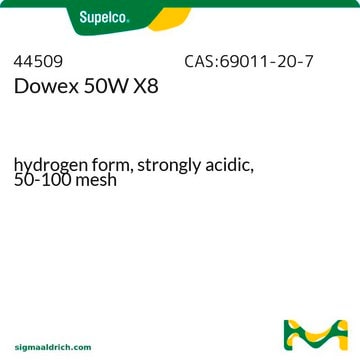463728
Manganese
powder, ≥99.9% trace metals basis
Synonyme(s) :
Colloidal manganese, Manganese element, Manganese-55
About This Item
Produits recommandés
Pureté
≥99.9% trace metals basis
Forme
powder
Résistivité
185 μΩ-cm, 20°C
Point d'ébullition
1962 °C (lit.)
Pf
1244 °C (lit.)
Densité
7.3 g/mL at 25 °C (lit.)
Chaîne SMILES
[Mn]
InChI
1S/Mn
Clé InChI
PWHULOQIROXLJO-UHFFFAOYSA-N
Vous recherchez des produits similaires ? Visite Guide de comparaison des produits
Catégories apparentées
Description générale
Application
- a starting material for the preparation of manganese oxide for lithium ion batteries
- a material used in surface alloying
- sintering of steel to form manganese steel
Caractéristiques et avantages
✔ Consistent quality
✔ High purity
✔ Available to scale up: bulk and pilot scale
Mention d'avertissement
Danger
Mentions de danger
Conseils de prudence
Classification des risques
Water-react 1
Code de la classe de stockage
4.3 - Hazardous materials which set free flammable gases upon contact with water
Classe de danger pour l'eau (WGK)
WGK 2
Point d'éclair (°F)
Not applicable
Point d'éclair (°C)
Not applicable
Équipement de protection individuelle
Eyeshields, Gloves, type P3 (EN 143) respirator cartridges
Certificats d'analyse (COA)
Recherchez un Certificats d'analyse (COA) en saisissant le numéro de lot du produit. Les numéros de lot figurent sur l'étiquette du produit après les mots "Lot" ou "Batch".
Déjà en possession de ce produit ?
Retrouvez la documentation relative aux produits que vous avez récemment achetés dans la Bibliothèque de documents.
Les clients ont également consulté
Articles
Higher transition metal silicides are ideal for anisotropic thermoelectric conversion due to their Seebeck coefficient anisotropy and mechanical properties.
Notre équipe de scientifiques dispose d'une expérience dans tous les secteurs de la recherche, notamment en sciences de la vie, science des matériaux, synthèse chimique, chromatographie, analyse et dans de nombreux autres domaines..
Contacter notre Service technique
